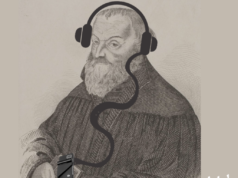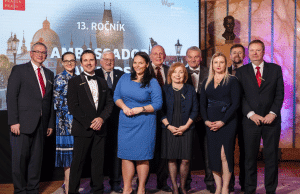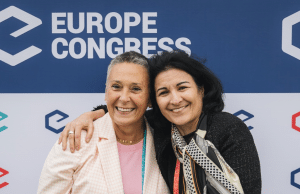In addition to taking basic guidelines of sustainable development, Cankarjev dom has also taken some guidelines in terms of measures for energy saving (automated switches for lights and water, LED lights, waste management, less paper consumption, use of environmentally friendly cleaning products, primary use of local suppliers and use of their products, use of catering services on the basis of local and seasonal) they have also taken a simple measure for energy saving. Participants at the after party in Club CD, which was organised after the official reception in the impressive Large Reception Hall, were invited to go to the party on foot instead of using the elevator. The first why? Not because they wanted to save energy to Cankarjev dom and to Conventa but rather so that the participants would burn calories of the meal. And the second why? Because the exact calculations have shown that the energy in our largest Congress Centre cannot be saved on the account of walking on foot and not using elevators.
Justification as calculated*:
One person weighting 75 kg, travelling to Club CD overcomes the height difference of 28,07m and 169 stairs for which he or she uses 21.000 Nm or VAs. All participants (for calculation 300 participants were presumed) use 3,5 kWh for walking up and down. Time needed for walking to Club CD is 85 seconds, and uses 250W of energy which is quite substantial.
Elevator has a carrying capacity of 1.000 kg or 13 people. Taking the elevator in one direction takes 22 seconds. If we take into account both the way up and down in the elevator, we get the result of 0,1 kWh. One cycle of the way that includes both going up and going down and entering and exiting of participants takes approximately 88 seconds which is more or less the same time it takes to walk. For taking up to 300 participants in the elevator, 23 runs need to be taken. The final time for taking all participants is thus 1 hour and energy use is 4,6 kWh. For impeccable functioning the elevator also needs energy for doors, lighting, controlling and in 8 hours this amounts to 5,3 kWh. Following from the above the elevator represents a larger cost when it is not running than when it is running.
Let’s now return to the staircase; this needs to be lighted when actively used by participants. The lighting takes some 16 kWh which is much more than the use of elevator. When walking participants are releasing heat which was valued through a calculation at 3,5 kWh. The increase of this parameter needs to be regulated with air conditioning and airing. Walking the stairs causes additional area of 588 m2 to be dirtied (in addition to the hall where the event is taking place) and this are also needs to be cleaned. Walking the stairs is also critical from safety point of view as participants are taking the evacuation way.
This way it was established that taking the staircase does not represent lower energy use and elevators are placed where they are with a certain reason and mission. So – let’s use sustainable guidelines based on common sense and not at any price.
* the data is purely technical, without prices. (Price of electric energy is 0,075 €/kWh. Calculation: 1 kWh = 860 kcal).
Vinko Sever, Maruša Rosulnik, Maja Vidergar













